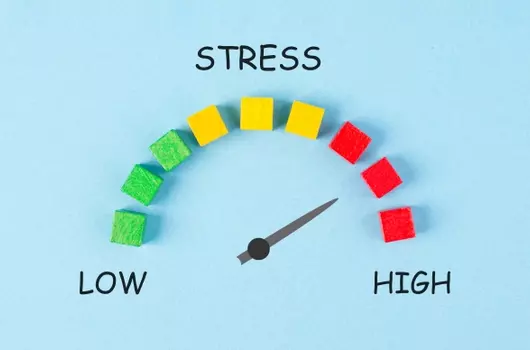How Stress Works
Maureen Cooper is the founding director of Awareness in Action, an organisation dedicated to helping people accomplish sustainable wellbeing in their lives, with their relationships and in the work environment. She is the author of The Stress Workbook, and in this abridged extract, she explains a little about how stress works in our bodies.
How the term ‘stress’ came about
The Hungarian-born Hans Selye (1907–82), is sometimes referred to as the ‘grandfather of stress research’. He is credited with popularising the term ‘stress’, but later on, in 1976, he wrote that he thought he had confused the terms ‘stress’ and ‘strain’ because of weaknesses in his use of the English language. If this is the case, it is ironic, because since Selye’s use of the term there has been intense debate over the difficulties in defining stress, which in turn has led to problems in measuring it.
Of course, even before it was named as ‘stress’, there was always interest in how we adapt to the struggles of life – sociologists, anthropologists, physiologists, psychologists and social workers had used a range of different terms. Once the term ‘stress’ was in the public domain, however, concepts such as conflict, frustration, trauma, alienation, anxiety and emotional distress were brought together under the same label, and it became a sort of umbrella term for a wide range of ideas.
The early ‘mechanical’ approaches to stress focused on how an animal or human responds to pressure from the outside, whereas Selye’s approach was concerned with our body’s response to stress and the internal pressures that can result. The ‘psychological’ view that came later favoured the study of the dynamic relationship between the outside causes of stress and the responses we have to it – thus combining the three elements of the body’s response to stress; the internal pressures that can result from that stress, and the psychological view.
The trouble is that in everyday practice the term stress can be used to describe all these different meanings. Someone may describe an unpleasant situation they are exposed to as ‘stress’, but use the same term to label their reaction to it, such as chest pain, or indeed the end result, which could be an ulcer. We can talk of ‘feeling stressed’, which indicates our own reaction to an outside pressure, and of ‘having a lot of stress’, which makes it sound like a simple external factor. In fact, we are talking about the same thing.
However intense the debate about terminology, there is little doubt that the concept of stress has taken a firm hold in our society. There is a wealth of statistics that paint a disturbing picture of how common stress is, particularly in the workplace.
How stress works in our bodies
Becoming familiar with the biology of stress is helpful to understand stress more thoroughly. Humans respond to stress just like other mammals do. The purpose of the stress response is to protect us in times of danger and keep us alive. The stress response has evolved as a way of returning the body to a state of balance after it has suffered an attack.
When we lived as members of tribes of hunter-gatherers on vast savannahs, our lives were infinitely less complicated than they are today, and at the same time dramatically more dangerous. Animal predators, unfriendly tribes, the perils of hunting and the demands of a life lived at the mercy of the elements all presented immediate life-or-death situations needing instant action. A gazelle attacked by a cheetah will experience the same set of physiological responses that humans do when feeling threatened, but in the case of the gazelle, the stress response is short-term – lasting either till she outruns the cheetah, or the cheetah gets its meal.
The trouble is that in humans this response has not been updated to suit our current lifestyles. In today’s complex world, few of us find ourselves chased by a sabre-toothed tiger, and yet our body’s stress response is still geared to deal with exactly this kind of emergency. Our body goes into the same response mode when we are faced with bad traffic, late-running trains and slow service in restaurants, but instead of the experience being short-term and relatively infrequent, we go through these and similar episodes several times each day.
It is this repeated low-grade arousal of the stress response, the sense of a continual simmering of activity, that is the greatest threat to our wellbeing. What makes the picture even more complex is that humans have the capacity to think and stimulate ideas, fantasies and images in the mind, which they then can ruminate on, going over and over them in their minds.
How stress works with our thinking brain
To put it simply, humans create loops in the mind where an emotion or a frightening event can trigger a series of thoughts and attention-focusing, and these in turn maintain and strengthen the emotion. These loops are the basis of many forms of stress and also of mental health difficulties. The reason for this is that people find it very difficult to get out of them – and the greater the threat, the tighter the loop. So, people find the mind going back and back and back to the thing that is stressing them, over and over again. Generally, it is not helpful for us to berate ourselves for falling into the trap of dwelling on things because that will only make us feel worse. Moreover, trying to tell ourselves to stop it doesn’t usually work.
The very good news in all this is that we do have more choice in how we respond to these loops than we think. By using mindfulness, meditation and compassion exercises we can begin to change the way our mind responds to threat and difficulty.




